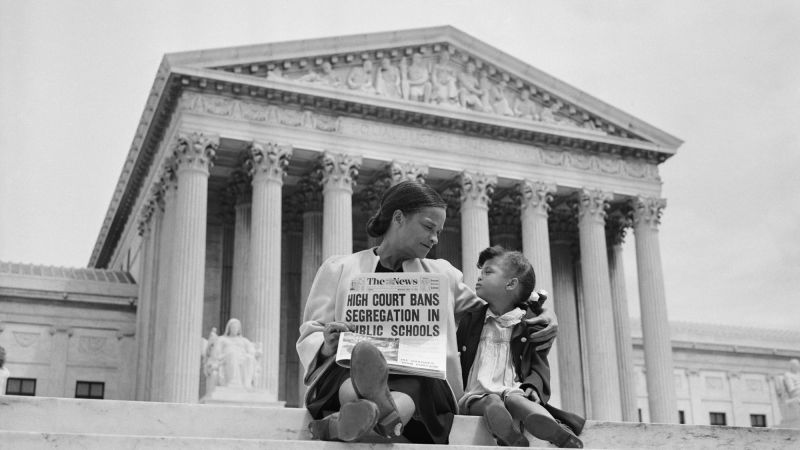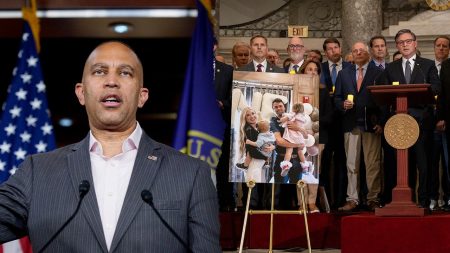Seventy years after the Brown v. Board of Education decision outlawed segregation in public schools, conservative groups are using the landmark ruling to challenge race-related policies in schools. While the decision was a victory for the civil rights movement, there is now a conflict over its meaning, with conservative groups arguing that schools and government programs should be colorblind. This interpretation is being criticized by civil rights groups, who say it goes against the intended purpose of the decision to rectify the nation’s history with racism.
Despite the Brown decision, many of the nation’s schools still remain deeply segregated, and right-wing groups have used the ruling to discredit efforts to integrate schools. Last year, the Supreme Court ended affirmative action in college admissions at Harvard and UNC, with the conservative majority arguing that Brown stood for eliminating the consideration of race. However, the court’s liberal wing disagreed, emphasizing the constitutional necessity of racially integrated schools as stated in the Brown decision.
The debate over color-blind versus race-conscious policies has spilled over into other lawsuits challenging workplace diversity programs and redistricting. Conservative groups have continued to challenge policies promoting student diversity without relying directly on race. For example, Students for Fair Admissions is suing the University of Texas at Austin for collecting racial data of applicants, arguing that the Supreme Court’s decision requires a color-blind approach. Meanwhile, the Pacific Legal Foundation has challenged a Virginia high school’s policy that sought to balance the student body’s racial makeup at the expense of Asian Americans.
The Pacific Legal Foundation argues that Brown’s legacy established the doctrine of color-blind public policies, but civil rights groups disagree, emphasizing the need for equal treatment based on race and the elimination of racial discrimination in the law. The history and meaning of the Brown decision are being reinterpreted by conservative groups to support their arguments against policies that consider race. Advocates for affirmative action argue that the goal of Brown was to end the nation’s caste system and not turn a blind eye towards racial discrimination.
The increase in racial segregation in schools since the Brown decision reflects the limits of the Supreme Court’s power in ensuring full integration. While the decision was a monumental win for civil rights, it has not fully delivered on its promise of equal educational opportunities for all students. The misuse of the Brown decision by anti-civil rights groups to further segregate schools goes against the original intent of the ruling to end segregation and promote equality in education. Despite the ongoing debate over colorblind policies versus race-conscious initiatives, the legacy of Brown v. Board of Education continues to shape discussions on racial equality and educational opportunities in the United States.













